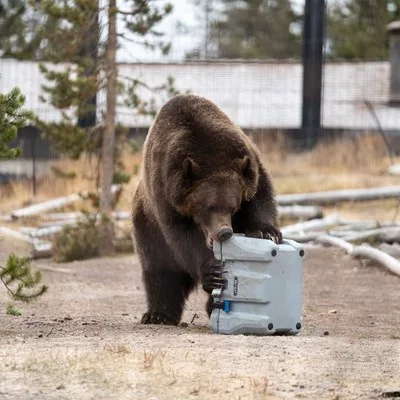How to Safely Store Food When Camping & Backpacking
As an avid outdoorsman, ensuring the safety of your food while camping and backpacking is crucial for both your wellbeing and the protection of wildlife. Understanding the importance of proper food storage and employing the best practices can make your adventures safer and more enjoyable. Here’s a comprehensive guide on how to safely store food when camping and backpacking.

Why is Food Storage Important When Camping and Backpacking?
Proper food storage is vital for several reasons:
- Prevents Disruption to Animals’ Natural Diets: Wild animals rely on natural food sources for their diet. When they gain access to human food, it disrupts their natural foraging behaviors.
- Avoids Animals Becoming Dependent on Human Food: If animals become accustomed to finding food in campsites, they can become dependent on it, leading to problems when food is no longer available.
- Reduces Unsafe Situations and Potential Euthanasia: Animals attracted to campsites can become a safety hazard. To protect both humans and animals, those that pose a threat often need to be relocated or euthanized.
Food Storage 101
- Consider Food Storage Regardless of Wildlife Presence: Even if you don’t see wildlife, they can still be present. Always assume food storage is necessary.
- Scented Items Attract Animals: Items such as deodorant, toothpaste, and lotions can attract animals just as much as food can.
- Keep Food Away from Sleeping Areas: Never store food or scented items in your tent. Keep them away from where you sleep.
- Do Not Leave Food Unattended: Always keep an eye on your food when in the campsite to avoid attracting animals.
Storing Food at a Campground
When camping in a developed campground, use the following methods to store your food safely:
- Use Hard-Sided Containers: Secure food in coolers, cars, campers, or designated bear boxes.
- Avoid Grocery Bags or Stuff Sacks: These are not secure and can easily be breached by animals.
- Store Food in Vehicles or Bear Boxes at Night: This adds an extra layer of protection against nocturnal animals.
- Bear Canisters or Bear Bags: If no vehicle or bear box is available, use these alternative storage methods.
Storing Food on a Backpacking Trip
Backpacking requires different food storage techniques due to the lack of facilities:
- Follow Area-Specific Rules: Different areas may have specific regulations for food storage.
- Use a Hard-Sided Bear Canister: These are often mandatory in bear country.
- Bear-Proof Bags: Scent-proof and puncture-resistant bear bags should be hung properly to ensure safety.
Types of Camping & Backpacking Food Storage Containers
- Coolers: Ideal for keeping items cold and safe. Look for IGBC-certified bear-proof coolers.
- Bear Canisters: Mandatory in some parks, these hard-sided containers keep food secure from bears.
- Bear Bags: Puncture-proof and smell-proof, these are ideal for hanging food in bear country.
- Hard-Sided Bins: Suitable for car campers, these need to be stored in vehicles or bear boxes to keep out small animals.
Approved Bear Canisters (Olympic National Park Example)
- BearVault 110b, 200, 250, 300, 350, 400, 425, 450, 475, 500
- Backpacker’s Cache (Garcia)
- Counter Assault Bear Keg Food Storage
- Counter Assault Kozee-Tote(Counter Assault)
- SABRE Frontiersman Bear Safe Food Storage
- Bear Food Bag Hanging System
- UDAP No-Fed-Bear
Approved Backpacks and Panniers
- Backpacks: Wise Backpack by Craftsman Tech Composites (hard-sided)
- Panniers: DeCarteret Aluminum Stock Panniers, Berner Bear Box, Bear Aware Panniers, Bear Country Camping Models SFO and HFO, Outfitters Supply TrailMax Bear Proof Pack Panniers
Not Permitted
- Ursacks: While approved for Grizzly Bears by IGBC, Ursacks are not allowed in Olympic National Park.
Expert Advice
- Critter-Resistant Bags: Use bags like Ursack Major in the backcountry for added protection.
- Odor-Proof Bags: Brands like Smelly Proof can help reduce attractants.
How to Hang a Bear Bag
Properly hanging a bear bag is essential to keep food and scented items safe. Follow guidelines specific to your area to ensure you’re hanging the bag correctly and securely.
Following Rules & Regulations
Always check the specific rules of the area you’re camping in. Some areas require hard-side containers or other specific storage methods. Contact rangers for the most accurate and up-to-date guidelines.
Summary
Proper food storage is essential for protecting yourself, wildlife, and your food supply. By following the discussed methods, you can ensure a safe and responsible camping and backpacking experience. Always be prepared and stay informed about the best practices and regulations in the areas you explore.
** Here’s a little transparency. Our website contains affiliate links. This means if you click and purchase, we may receive a small commission. Don’t worry, there’s no extra cost to you. It is a simple way you can help support our mission to bring you quality content. **
(As an Amazon Associate, I earn from qualifying purchases)